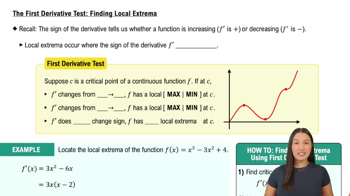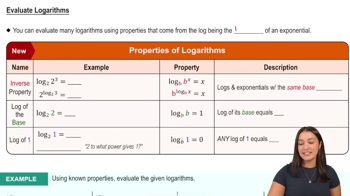Find the critical points of the following functions on the given intervals. Identify the absolute maximum and absolute minimum values (if they exist).
ƒ(x) = x³ ln x on (0, ∞)
 Verified step by step guidance
Verified step by step guidance Verified video answer for a similar problem:
Verified video answer for a similar problem:

